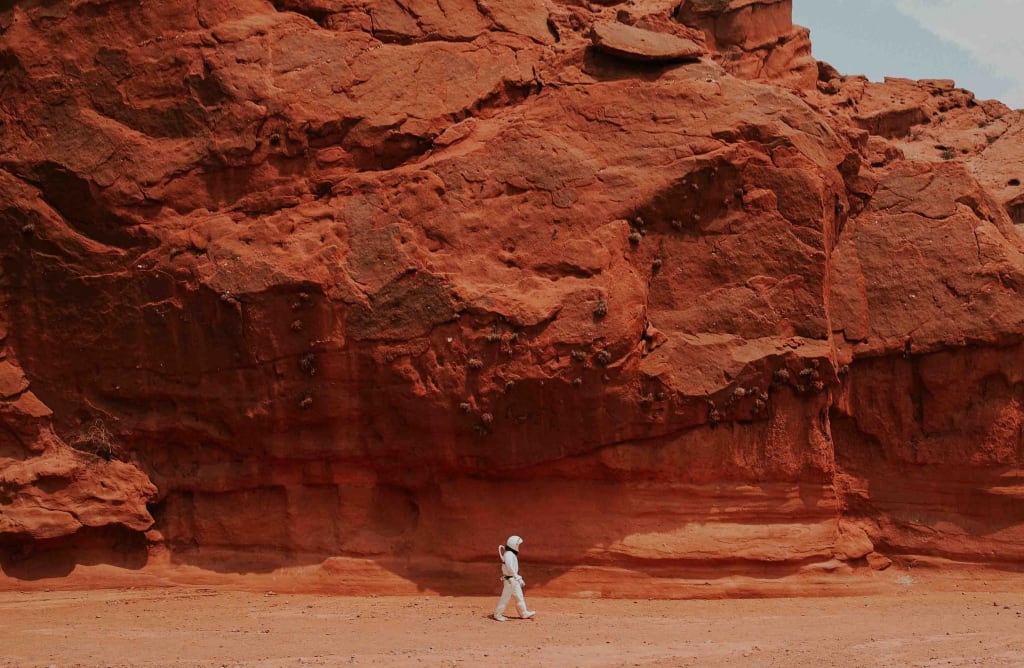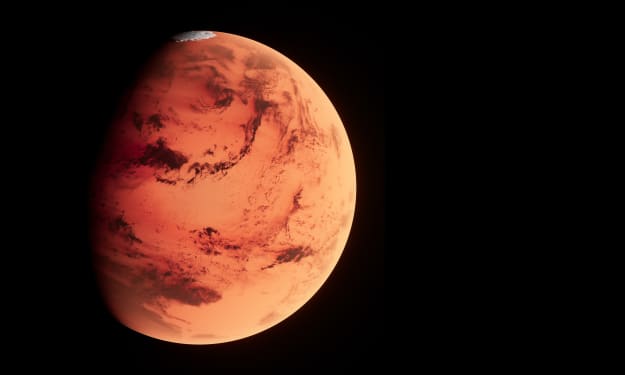"The Cosmic Dance of Mars: A Journey Through the Fourth Rock's Orbital Odyssey."
The fact that Mars is 1.52 AU from the Sun

Introduction:
In the vast expanse of our solar system, Mars takes center stage as the fourth rock from the sun, showcasing its unique celestial ballet at an average distance of 1.52 astronomical units (AU). This seemingly modest number conceals a wealth of cosmic intricacies that define Mars' orbital odyssey and contribute to its mystique as the Red Planet. In this exploration, we embark on a journey through the orbital dance of Mars, unraveling the significance of its 1.52 AU distance, the eccentricity of its orbit, and the gravitational forces that shape its cosmic trajectory.
Chapter 1: The Dance of Distances
To comprehend Mars' place in the solar system's choreography, we first turn our attention to the concept of astronomical units (AU). Defined as the average distance between Earth and the sun (approximately 93 million miles or 150 million kilometers), one AU serves as a fundamental measure of celestial distances. At an average of 1.52 AU from the sun, Mars orbits at a distance about 52% farther than Earth, marking its unique position as the fourth rock from our stellar furnace.
This dance of distances between celestial bodies sets the stage for the gravitational interactions, orbital dynamics, and cosmic relationships that govern the celestial bodies in our solar system.
Chapter 2: The Eccentricity of Mars' Orbit.
While 1.52 AU signifies the average distance, Mars follows an elliptical orbit, imparting a touch of eccentricity to its cosmic journey. The eccentricity of Mars' orbit is a measure of how much its path deviates from a perfect circle. At its closest approach to the sun (perihelion), Mars draws within 1.38 AU, while at its farthest point (aphelion), it extends to 1.67 AU.
The eccentricity of Mars' orbit introduces a dynamic element to its orbital rhythm, influencing the intensity of its seasons and the distribution of solar radiation across its surface. This elliptical trajectory contributes to the richness of Martian climatic patterns and geological processes.
Chapter 3: Mars' Synchronized Revolution.
Mars' dance through the cosmos involves a synchronized revolution around the sun, a journey that spans approximately 687 Earth days. This prolonged revolution period shapes the Martian year, which is nearly twice as long as an Earth year. The synchronization of Mars' revolution with its rotation—the Martian day lasting about 24.6 hours—creates a unique temporal rhythm on the Red Planet.
The longer year on Mars, marked by distinct seasons, emerges as a testament to the harmonious interplay of celestial mechanics that governs the cosmic dance of our solar system.
Chapter 4: The Tug of Gravitational Forces.
Gravitational forces wield influence in the cosmic ballet, and Mars, situated at 1.52 AU, experiences gravitational interactions with Earth and other celestial companions. The gravitational forces exerted by Earth and neighboring planets contribute to subtle perturbations in Mars' orbit, leading to phenomena such as orbital precession—the gradual shift in the orientation of Mars' orbital axis over time.
These gravitational nuances highlight the interconnected nature of our solar system, where celestial bodies engage in an intricate dance guided by the unseen forces of gravity.
Chapter 5: The Search for Life: Mars' Orbital Goldilocks Zone.
Mars' position at 1.52 AU places it within the solar system's habitable zone, colloquially referred to as the Goldilocks zone. This zone denotes the region around a star where conditions are conducive to the existence of liquid water—a key ingredient for life as we know it. Despite Mars' current arid and inhospitable surface, the orbital placement within the habitable zone sparks curiosity about the planet's potential for past or present microbial life.
Exploring the possibility of life on Mars involves understanding the intricate interplay between orbital dynamics, geological history, and atmospheric conditions, weaving a narrative that transcends the boundaries of our home planet.
Chapter 6: Observing Mars from Earth.
Mars' orbital dynamics also play a role in its visibility from Earth, offering captivating opportunities for astronomers and stargazers alike. The varying distances between Earth and Mars lead to a phenomenon known as opposition, occurring approximately every 26 months. During opposition, Mars and the sun are on directly opposite sides of Earth, bringing the Red Planet closer and making it appear brighter and more prominent in the night sky.
The observations of Mars from Earth, especially during opposition, provide astronomers with valuable insights into the planet's surface features, atmospheric conditions, and seasonal changes. Telescopes and spacecraft capture images that offer a glimpse into the intricate details of the Martian landscape.
Conclusion:
As we conclude our journey through the orbital odyssey of Mars, the Red Planet emerges not merely as a distant celestial body but as a cosmic companion engaged in a dynamic dance with the sun and neighboring planets. Its 1.52 AU distance, eccentric orbit, synchronized revolution, and gravitational interplay contribute to the captivating narrative of Mars in our solar system.
Mars beckons us to contemplate the mysteries that unfold beyond our terrestrial abode, inviting us to ponder the cosmic symphony that orchestrates the movements of celestial bodies. From the vast distances of interplanetary space to the intricacies of gravitational forces, Mars stands as a testament to the cosmic wonders that continue to inspire our exploration of the cosmos.





Comments
There are no comments for this story
Be the first to respond and start the conversation.